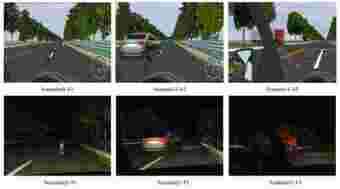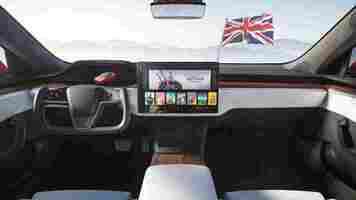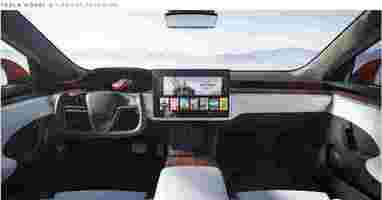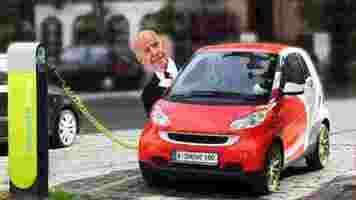South Korea will use VR to determine if the elderly can keep driving
The Korean National Police Agency (KNPA) is pushing for the implementation of conditional licenses for elderly drivers by 2025, Yonhap News reports.

That in and of itself is, well… boring. But the real story is about how they’ll determine who gets to keep their license: virtual reality.
As of Monday, a three-year research project has been introduced, which will employ VR tech to assess whether drivers aged 65 years and older can remain behind the wheel. The program’s total budget is expected to reach approximately $3 million (3.6 billion won).
Contrary to other countries around the word, South Korea has no strict regulations regarding the driving license of seniors, unless they test positive for dementia.
Currently, two measures apply: the three-year license renewal period for those aged 75 years and older, and the voluntary return of the driver’s license for people over 65 years-old.
However, the KNPA is still raising concerns over the number of accidents attributed to senior drivers, as well as the continuous aging of the country’s population.
According to police statistics :
The number of traffic accidents caused by drivers over 65 years-old is 1.86 times higher compared to those in their 30s.
The number of induced deaths caused by the senior age group is 2.75 — the highest among all age groups.
As the population is rapidly changing, the number of seniors holding a driver’s license has increased by 300% (from 1 million to 3 million) between 2008 and 2018.
The researches participating in the program are emphasizing the related safety issues by highlighting that vision deteriorates with age, especially in environments where there’s not enough light — during nighttime driving, for instance.
The VR test will asses driving, cognitive, and memory skills using a VR headset, close to how virtual reality technology is used in dementia clinics to check the brain functions of older people.
While the specifics are yet to be disclosed, a similar academic research by independent scientists has run an experiment, testing driving performance evaluation based on virtual reality tech.
The researchers conducted driving simulator experiments to measure various driving behaviors under many different driving conditions, in order to examine the participants’ visual acuity.
The virtual simulations included two scenarios: daytime and nighttime highway driving. In both cases, three unexpected incidents were created to test the drivers’ performance, as you see below:


So while we’re stuck guessing about the specifics of the KNPA’s use of VR for now, my bet would be that they’d go pretty much the route of the researchers. But still, that’s merely my guess.
Wait, what!? Tesla’s dangerous butterfly steering wheel is actually legal in the UK
Last week, Tesla unveiled images and stats for its 2021 Model S refresh. Even though it was likely keen to wow people with the powerful Plaid drivetrain, it was the damn butterfly steering wheel that caught everyone’s eye.

Some loved it, some hated, but almost all of us had no idea whether it was even legal.
Based on information we uncovered at SHIFT, we resolved that it probably wouldn’t make it into production . All publicly available regulations suggested that steering wheels have to be round and complete to be legal in the US.
However, Road and Track contacted the National Highway Transport Safety Administration, which, with a bemused look on its face, declared that it didn’t actually know if the “yoke steerer” is legal or not.


Now, on the other side of the pond, The Sunday Times Driving , has tried to get an answer to the situation, and it seems that Tesla’s divisive butterfly wheel might actually be allowed.
After being thrown from pillar to post, the newspaper got an answer from the UK’s Department for Transport, the agency that oversees most other road and traffic safety bodies.
According to the DfT, “The regulations relating to steering equipment (UN-ECE Regulation 79) does not stipulate any shape or size of the steering wheel.” That’s it, that’s all the DfT told The Sunday Times.
This is quite a different tune to US regulations. Under this guidance cars in the UK could use joysticks, game controllers, or literally anything else to control the direction of the vehicle. And we know that’s a bad idea .
I really hope this isn’t the last we hear about Tesla’s butterfly “yoke” steering not-a-wheel. Sure it might conjure memories of Kitt from Knight Rider, but I’ll just let Tim Stevens from Road Show tell you why it’s a terrible idea.
Honestly, I hope it doesn’t make it into production for everyone’s safety.
SHIFT is brought to you by Polestar. It’s time to accelerate the shift to sustainable mobility. That is why Polestar combines electric driving with cutting-edge design and thrilling performance. Find out how .
Here’s where the US’ $174B investment into EVs is going
American President Joe Biden has detailed a $174 billion investment into electric vehicles as part of the country’s $2.5 trillion infrastructure plan.

Where’s the money going?
The Biden administration will put $174 billion into creating jobs, growing the EV market in the US, and supporting the associated industry.
Factories will be financed to be retooled, and supply chains will be supported to grow domestically, but compete globally.
As in many other EV-focused nations like the Netherlands and Norway, some funds will be used to give car buyers rebates and tax incentives. In this case, those subsidies will apply to American-made EVs.
The US’ charging infrastructure is also going to get a helpful boost with Biden’s administration planning to support state and local governments to build 500,000 EV chargers across the nation in the next 10 years.
School buses are going to be electrified too. Some 20% will be replaced with electric alternatives. Eventually all school buses will be electric in the US — at least that’s Biden’s goal.
More details on the spending can be viewed on the White House’s website.